FotoGrafia, the 7th edition of international festival of photography closed recently in Rome. I’ve already mentioned how much i have been blown away by Paolo Woods’ Chinese Wild West, one of the photo series i discovered at Palazzo delle Esposizioni.
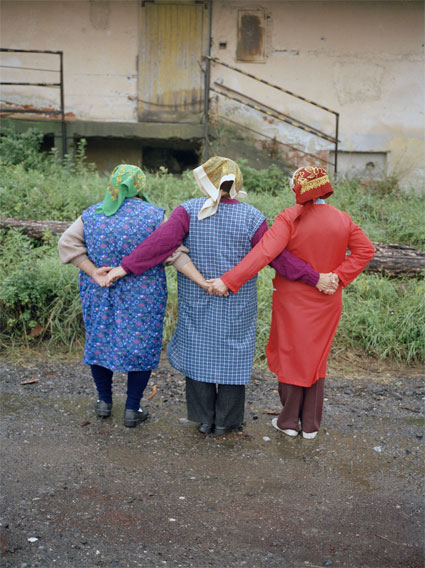 Milkmaids, 2007, Lucia Nimcova
Milkmaids, 2007, Lucia Nimcova
The other photographer whose work impressed me at Palazzo is Lucia Nimcova. It’s probably nothing you haven’t seen before: ex-communist moments and places in all their coldness, blandness, cheesy silky buttoned-up shirts, poodle-perms and faux-marble. It never fails to make you smile but don’t get carried away too easily because here’s a photographer who sees beyond the nostalgia and the zero fashion sense, Nimcova has tact, delicacy and talent. In her Unofficial series, the photographer documents Normalisation, an ideological programme involving political and social integration applied in Czechoslovakia after 1968. Searching for and analyzing the photographic archives in her city, Humenné, Nimcova is looking back at a not-so-distant past which traces are still visible today.
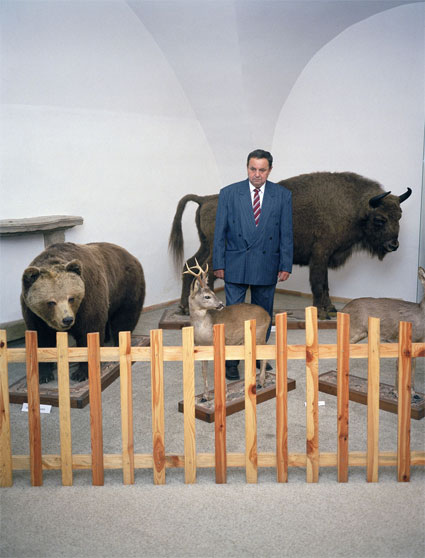 With delegates, 2007, Lucia Nimcova
With delegates, 2007, Lucia Nimcova
But it was at the Museo di Roma in Trastevere that i got the real shock and awe experience. The museum was hosting the World Press Photo 2008 exhibition. For 50 years, the World Press Photo Foundation is awarding the most striking and representative images that have accompanied, documented and illustrated the events of our times in newspapers.
The Photo of the Year 2007, taken in Afghanistan by Tim Hetherington, portrays an American soldier resting in a trench. All the winners are listed on this webpage but here is my selection (with texts coming mostly from the awards website):
The most stunning image for me is from a series called Gorilla Killings by Brent Stirton .
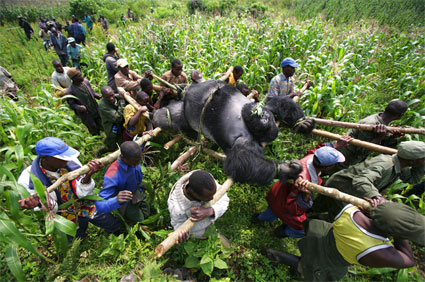 Brent Stirton, Reportage by Getty Images for Newsweek. Evacuation of dead Mountain Gorillas, Virunga National Park, Eastern Congo. Photo First magazine
Brent Stirton, Reportage by Getty Images for Newsweek. Evacuation of dead Mountain Gorillas, Virunga National Park, Eastern Congo. Photo First magazine
Stirton’s images narrate how in July 2007, Conservation Rangers worked with locals to evacuate the bodies of four breathtakingly beautiful Mountain Gorillas killed in mysterious circumstances in the Virunga National Park, Eastern Congo. A Silver-Back Alpha male, the leader of the group was shot, three females were also killed. Two of the females had babies and the other was pregnant. It is suspected that the motivation for the killing are political. The local illegal Charcoal industry is economically and politically at odds with conservation efforts in this very poor area. As a result, over 100 Rangers have been killed in the last ten years as part of their efforts to protect the Gorillas of Virunga, one of the world’s most endangered species.
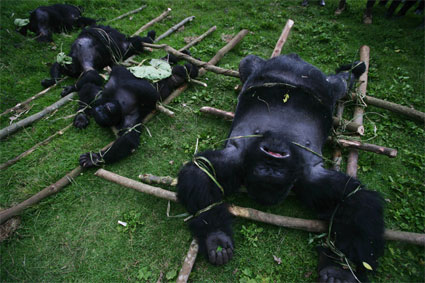 Brent Stirton, Reportage by Getty Images for Newsweek. Evacuation of dead Mountain Gorillas, Virunga National Park, Eastern Congo
Brent Stirton, Reportage by Getty Images for Newsweek. Evacuation of dead Mountain Gorillas, Virunga National Park, Eastern Congo
For more information, have a look at The National Geographic’s video in which photographers Michael Nichols and Brent Stirton explain the significance of the recent gorilla massacres in the Democratic Republic of Congo.
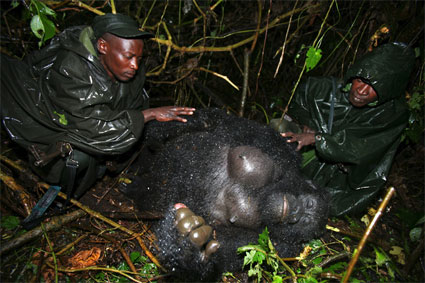 Brent Stirton, Reportage by Getty Images for Newsweek. Evacuation of dead Mountain Gorillas, Virunga National Park, Eastern Congo
Brent Stirton, Reportage by Getty Images for Newsweek. Evacuation of dead Mountain Gorillas, Virunga National Park, Eastern Congo
For the past year, Erika Larsen has been traveling the U.S. capturing the hunting experiences of children on camera. In some states across the USA it is legal for children under the age of 12 to hunt if in the company of a licensed adult hunter. The removal of age barriers in hunting follows campaigns by some outdoor organizations to give young people the chance to discover recreations other than computer games.
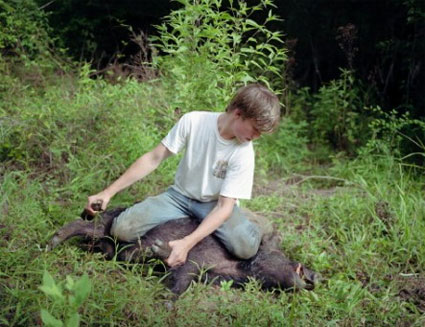 Erika Larsen, USA, Redux Pictures for Field & Stream Magazine. Josh David Keith (15) straddles a live boar on Boyles Island, Georgia
Erika Larsen, USA, Redux Pictures for Field & Stream Magazine. Josh David Keith (15) straddles a live boar on Boyles Island, Georgia
In the communist era, circus was one of the most popular forms of mass entertainment in Poland. Performers all came from a circus school in Julinek. Since the 1990s, Julinek has been slowly dying. The circus center that once employed up to 1,500 artists and technicians has closed due to financial problems. Rafal Milach tracked down and portrayed retired artists who performed in circus for several decades
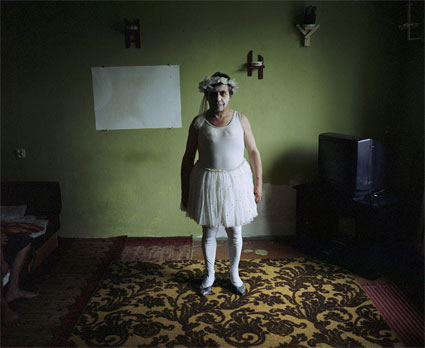 ©Rafal Milach. Retired circus artiste Jozef Maksymiuk (59), at home dressed in one of his old costumes
©Rafal Milach. Retired circus artiste Jozef Maksymiuk (59), at home dressed in one of his old costumes
Cédric Gerbehaye reported on the aftermaths of the first free elections in the Democratic Republic of the Congo in more than four decades. Held in 2006, they did not put an end to violence and instability in the country.
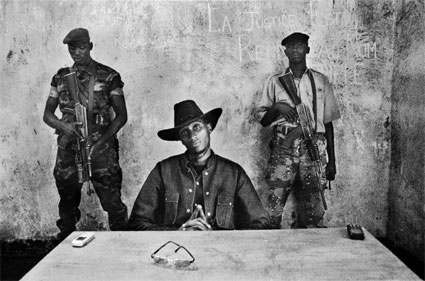 Cédric Gerbehaye. Dissident general Laurent Nkunda, leader of the CNDP (National Congres for the Defense of the People), poses at his headquarter in his stronghold of Kichanga, Masisi hills in North-Kivu. Written on the wall: Justice is rendered in the name of the people. Democratic Republic of Congo, 2007
Cédric Gerbehaye. Dissident general Laurent Nkunda, leader of the CNDP (National Congres for the Defense of the People), poses at his headquarter in his stronghold of Kichanga, Masisi hills in North-Kivu. Written on the wall: Justice is rendered in the name of the people. Democratic Republic of Congo, 2007
Benjamin Lowy made extremely moving portraits of blinded Iraqi detainees awaiting transportation to a prison facility after American and Iraqi forces arrested them on suspicion of insurgent activity, in Arab Jabour, south of Baghdad:
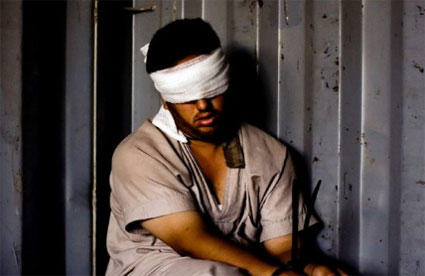 Benjamin Lowy, USA, VII Network for The New York Times Magazine
Benjamin Lowy, USA, VII Network for The New York Times Magazine
I would like to end this post on a cheerful note but i can’t.
Five years after the closure of the Sangatte refugee center near Calais, some 500 migrants sleep rough in makeshift shelters on the city outskirts. Many have fled conflict in Iraq, Afghanistan and Darfur, and are hoping to stow away in trains or vehicles heading through the channel tunnel to seek asylum in the UK. Calais overlooks the Strait of Dover, the narrowest point in the English Channel, and is the closest French town to the United Kingdom. In April, the mayor of Calais announced plans to build some basic facilities for migrants on an abandoned football pitch.
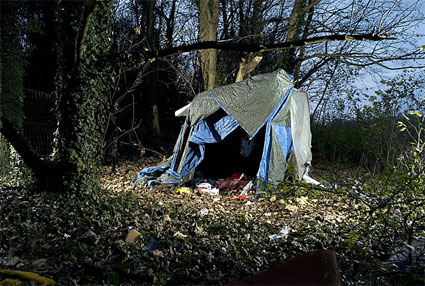 Jean Revillard, Switzerland, Rezo.ch.
Jean Revillard, Switzerland, Rezo.ch.
